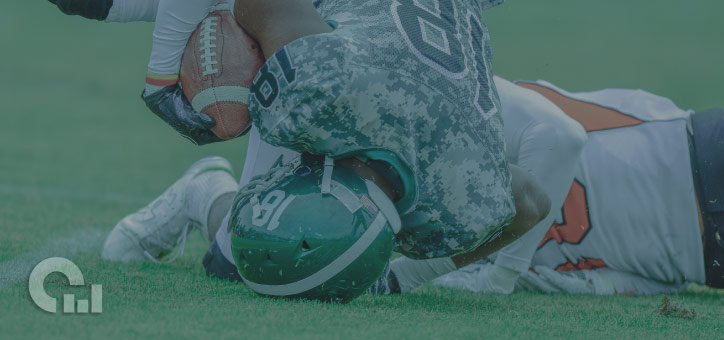Most people share the dream of having a career that is both fulfilling and secure. Imagine going home energized every day instead of drained, and waking up every morning excited, rather than contemplating calling in sick. That sounds like heaven and, for some people, that sounds like a career in sports medicine.
But what’s the point of a passion that isn’t a sensible source of income? Many people worry about starting a career or changing fields because of a fragile market, and sometimes this fear is strong enough to keep people from ever making a change.
So…How is the Job Market in the Sports Medicine Field?

It’s good. Really good, in fact. How do we know? Well, let’s look at the Bureau of Labor Statistics for some insight.
Here are some popular jobs in the sports medicine field, and their estimated growth between 2018 and 2028:
- There were 247,700 physical therapists in 2018. There will be an increase of 54,200 jobs by 2028, for a 22% growth.
- There were 31,100 athletic trainers in 2018. The BLS estimates that this will grow by 19%, or 5,900 jobs, by 2028.
- There were 756,800 physicians in 2018. We estimate that around 5-10% was in sports medicine. This number is expected to grow by 55,400, or 7%, by 2028.
- There were 15,800 exercise physiologists across the country in 2018. This number is expected to grow by 1,500, or 10%, by 2028.
- There were 70,900 dietitians and nutritionists in 2018. The BLS forecasts this number to grow by 8,000, or 11%, by 2028.
To be clear, we’re not leaving anything out, nor are we manipulating data. We’re showing raw data from research done through the United States Bureau of Labor Statistics. It doesn’t get any more legit than that.
Some professions are falling away. Unfortunately, librarians, bank tellers, telemarketers (we’re not sure how sad we are about that one), postal carriers, and farmers aren’t doing too well. Many of these professions will reduce in numbers by over 20% in the next ten years.
On the other hand, judging by the aforementioned growth projections, those thinking about entering the field of sports medicine can depend on a market that is not only dependable but also growing rapidly.
Why Are Sports Medicine Professionals Doing So Well?
If you read the Popol Vuh, the creation myth of the Mayan people, you’ll read about how two teams played a ballgame. As scholars and historians understand it, the game was a mix of soccer and basketball. But there was one critical difference: the winning team was sacrificed. Sound scary? It wasn’t—the winning team believed that sacrifice would bring them closer to the gods.
How does this all relate, you ask? We’ll tell you. While how we play our games has changed, humans have been playing sports since the first stories were told. And we’ll keep playing sports; it’s a part of our nature.
As long as swimmers swim, football players tackle, basketball players dunk, and runners sprint, there will be a massive sports medicine profession to support and enhance these athletes. Teams need athletic trainers; injured athletes need physical therapists.

The biggest reason the sports medicine industry is burgeoning is that sports medicine professionals support people who have been doing what humans have done for centuries. While digital collections are replacing librarians, automated calls are replacing telemarketers, and private couriers are taking over the postal industry, nothing can replace a sports medicine professional.
A computer can’t tell you what to eat for your particular body type and goals. Only a nutritionist can. And a robot can’t bandage your rolled ankle—at least not yet. Only an athletic trainer can do that, and only an athletic trainer can tell when you are ready to return to the field.
Physical therapists won’t go away, either. They play a vital role in our society, for athletes and all other types of people. Unfortunately, humans get injured playing sports and doing ordinary activities. Until evolution makes our bodies infallible, physical therapists will play a significant role in our society. The same goes for physicians and exercise physiologists.
Will Sports Medicine Continue to be Steady in the Future?
Jobs that are diminishing greatly are almost always doing so for one of two reasons: automation and digitization. As far as we know, the sports world isn’t moving in either direction. Sure, E-Sports has become a thing. And yes, NBA players are playing NBA 2k20 while they sit out the season because of coronavirus. But at the end of the day, people are going to play sports.
We all remember our days playing tee-ball, gymnastics, tennis, basketball, or another sport during our youth. It taught us the value of play, and it made us who we are. Whether we realize it or not, sports are a crucial part of almost all of our lives. And until that changes, sports medicine will continue to prosper.





